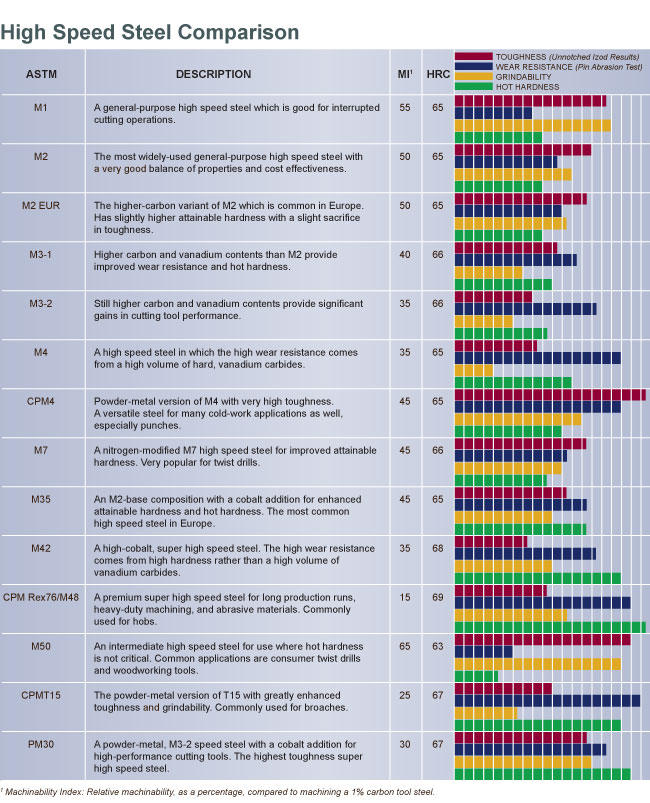Selection of High-Speed Tool Steels
High-speed tool steels are designed primarily for cutting tool applications. The term “high-speed” was used when these steels were first invented. The term refers to the fact that the steels could be used as cutting tools at high turning speeds on a lathe. In some cases, the turning speeds were so fast that the tools would heat to dull red color, which is about 1100°F (593°C). The ability to maintain the hardness required for cutting while at this temperature is a property known as red hardness or hot hardness, and it is the primary defining characteristic of high-speed steels.
High-speed steels exhibit high strength and hardness, but typically exhibit lower toughness than the cold work tool steels. Some, most notably M2 and powder metal M4, are used in cold work applications because of the strength and wear resistance which can be achieved.
To qualify as a high-speed steel, the chemical composition must meet certain minimum requirements, which are defined in the ASTM A600 Specification for High-Speed Tool Steels. The lowest alloy grades, M50 and M52 high-speed steels, are properly known as intermediate high-speed steels because of their lower alloy contents. The cobalt-bearing grades, such as M35 and M42, are known as super high-speed steels because they exhibit enhanced hot hardness.
The nominal chemical compositions of the common high-speed and intermediate high-speed tool steels are presented in weight percent below. Relative comparisons of the properties of the steels are presented in the chart on the reverse side. More specific information about the steels may be obtained from the individual data sheets. Grades with the DuraTech™ prefix are manufactured by powder metallurgy and provide very unique combinations of strength, toughness, and wear resistance. Several of the grades are also available in a resulfurized version. The sulfur addition improves the machinability of the steel in the annealed condition and the grindability in the hardened condition.

